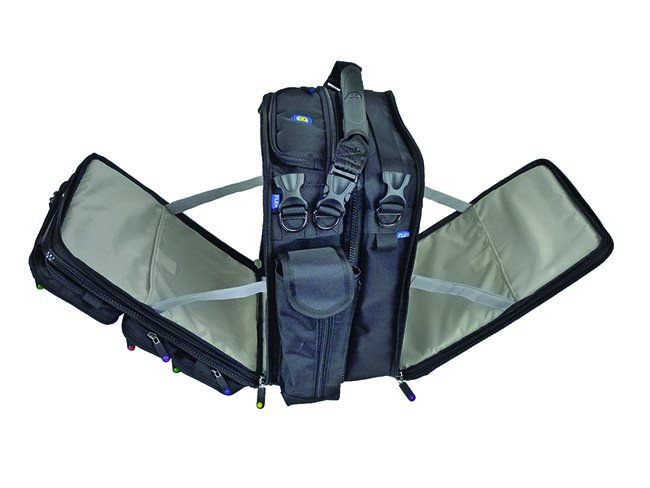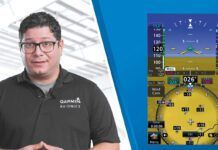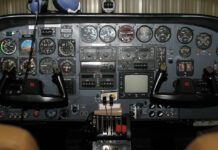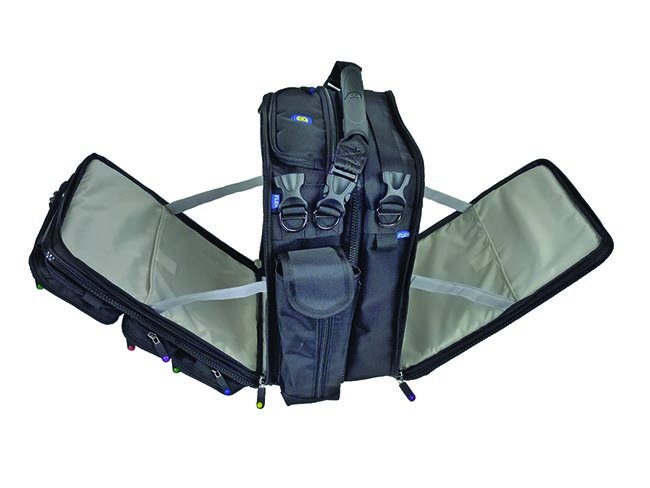
What’s the perfect flight bag for you? I can guarantee it’s different from mine. But each of us has many of the same storage requirements. Most of us have a headset or two and a tablet computer. We all have a flashlight, paper and pens. Some of us might carry a dedicated GPS or a handheld radio.
So, what most of us have put up with over the years is a bag into which we toss whatever we need. Sure, it’ll have some pockets and such to store specific items like a dedicated headset compartment, but the rest of what each of us uniquely carries ends dumped into a center compartment where, like the clich of a lady’s purse, it might be difficult to retrieve without dumping everything out.
So, the folks at BrightLine Bags designed a series of what amount to individual compartments that you can use for your particular items. Those compartments all zip together to make one overall flight bag. They’ve recently redesigned their products into the more versatile second generation called the FLEX System.
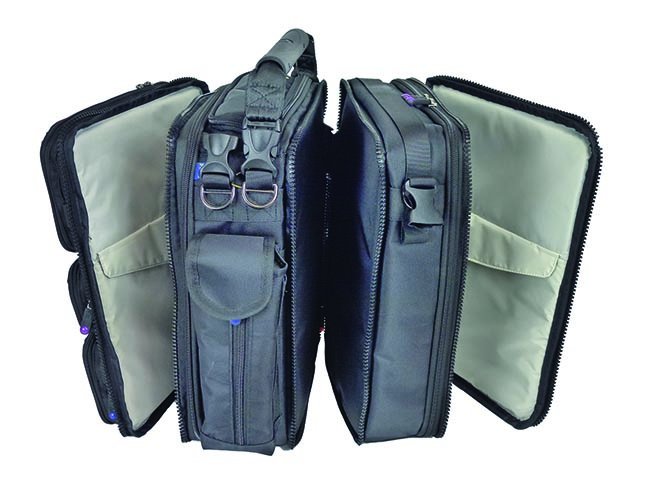
The Basics
Although you can purchase some standard configurations, each component is available separately—get exactly what you want. The components all work with each other. Components come in three general types: end caps and center sections that zip together, and side pockets that attach via Velcro. You’ll also need a handle or shoulder strap for carrying.
From the end, the end caps and center sections measure approximately 13 1/2 inches tall by 10 1/2 wide so those dimensions are fixed. The overall depth is simply the sum of the components you use. If you add side pockets (most will), those extend beyond the 10 1/2 inch width.
There are two end cap types. One has about a bazillion pockets and the other is rather plain with a cleverly designed flap arrangement that can either be placed over the telescoping handle of a suitcase or separate wheel cart, or be reconfigured into a thin pocket for papers or the like.
Since the components zip together, it’s possible to use the space between them. Although not designed to provide meaningful storage, the inter-component space is usable for thin items because the bag system is soft sided. The end caps make special use of this by including a slip-pocket on the side intended to be zipped to the next component.
The center sections are all similar, but vary in thickness. They come in 2-, 3-, 4-, 5- and 11-inch sizes. Obviously, the 11-inch center section is cavernous, and its use might encourage the dump-it-all-in style this system is intended to overcome. Alternatively, you might configure a normal flight bag and pack clothes and such for an overnight trip in this compartment. You could even unzip one or more center sections containing stuff you don’t need in flight and place those in the baggage compartment to shrink the flight bag for actual in-flight use.
The 2- and 3-inch center sections are virtually identical except for the size. They’re simple compartments, ideal for something like a laptop computer or a kneeboard, that also have an inside sleeve for papers or other thin items.
The 4- and 5-inch center sections are likewise similar, but also have a horizontal shelf and a top flap that’s zippered on three sides for full top access. The top flap has a separate zippered pocket that’s ideal for sunglasses, a calculator or something similar. The shelf attaches with Velcro to make separate top and bottom sections.
The zippers open not just the top so you can reach in, but the entire compartment so that you can get to the bottom section if you use the shelf. If you have a multiple compartments, though, this can get awkward because opening the bag this way to fully access the bottom section potentially necessitates flipping the entire bag over on its side or lifting it up so the compartment can hang open.
The 5-inch center section is ideal for approach binders and similar manuals, while the 4-inch section might be best for headsets or larger electronics.
There are various side pockets that are secured with Velcro to the outside of the assembled bag. Purposes include carrying a water bottle, handheld radio, flashlight, pens and pencils, etc. The side pockets attach to any of the three larger center sections, but there’s one wide side pocket requiring two center sections or the 11-inch component. There’s a patent-pending folding-flap arrangement that makes the Velcro attachment secure.
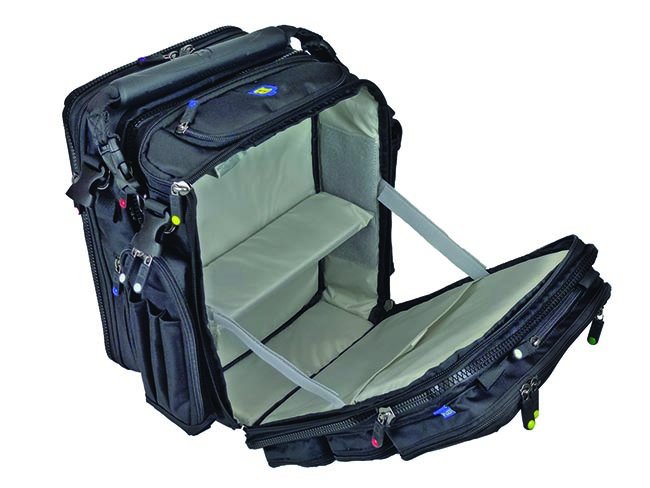
Putting It To Use
I always take a laptop computer with me, in addition to a tablet for in-flight use. I’d been using a laptop bag with a large patch pocket on the front to carry my headset, small chart binder, flashlight, passport, papers and other small items.
After experimenting with various configurations in the FLEX System, I started with the two standard end caps. The Pocket end cap has three horizontal pouches, one above the other. They each have a varying size pocket-in-the-pouch with the one on top being perfect for my passport. Inside the actual top pouch I keep a few odds and ends.
The middle pocket houses my laptop charger, and the lower pocket is where I keep my cell phone and earpiece, with a few other goodies. Overall, I’ve underutilized these pouches that have pockets and zippers upon zippers. Others might find this an ideal place to put some electronic components such as various sensors and wires for your tablet, for instance.
I’ve configured the Flat end cap for the larger pocket rather than using it to slip over a suitcase handle. In there I put various papers and information.
Next, I put my 14-inch laptop into a 2-inch center section. My laptop is a bit tall, but since these are all soft-sided compartments, the dimensions are not rigid and it fits fine with a little finesse.
I put my headset (probably unnecessarily inside the manufacturer’s case), a couple of inflatable lumbar cushions and other odds and ends into a 4-inch center section. In the pouch in the top flap go my cased prescription sunglasses.
My tablet computer goes between the pocket end cap and the next center section. Between the laptop center section and the one with my headset, I placed an actual paper notebook. I put some emergency-ration chocolate bars between a center section and the flat end cap.
One side pocket houses a two-liter water bottle (that fits tight, but works best when upside-down) and the other has outside pockets for pens and similar, while inside I put my LED flashlight.
This is a work in progress; each time I use the bag, I put some different stuff in different places. But I’ve come to admire the versatility and level of organization of this approach and I look forward to finding my ongoing ideal configuration.
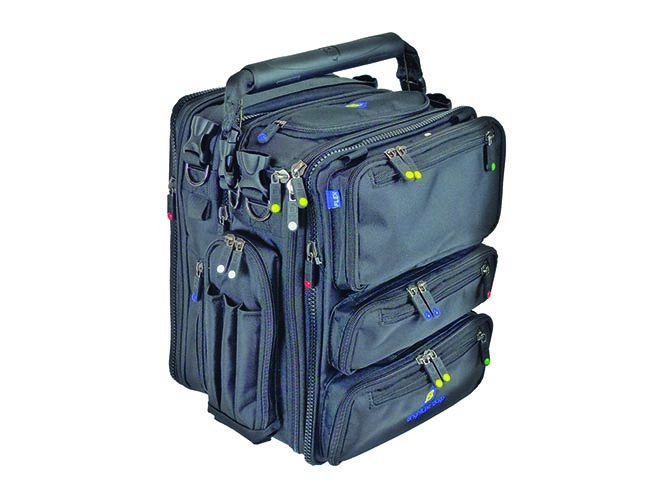
Observations
This is an extremely well thought-out design that’s manufactured with excellent quality. Individual parts are chosen for both functionality and serious durability. Every aspect is fully considered for maximum versatility, like straps that use Velcro to attach so they can be either straps that secure the open compartment or the contents. Given the superb design and manufacturing quality of this system, it’s modestly priced.
Good cockpit resource management involves having the stuff you need at hand. The BrightLine Bags FLEX System is a terrific place to start, but getting that start can be daunting. This system is so versatile that even in my somewhat modest configuration there are at least 27 pockets/compartments/pouches and 24 zippers. (I say “at least” because I’m not entirely sure I found them all yet.)
But all that versatility is also the Achilles’ heel. If there’s such a thing as too much versatility, too many pockets within pouches and zippers on zippers, the FLEX System has hit that mark. (Color-coded zipper pulls help a bit.) Making a BrightLine Bag the centerpiece of good physical cockpit resource management will require user discipline to always put each thing in the right place. You do not want to hunt through those 27 pockets to find spare batteries if your flashlight dies.
Plus, flexibility creates some physical constraints. For example, the handle must be put on as you see. This is fine for smaller configurations, but can be awkward for larger bags, where, for example, it becomes difficult to hang the bag from the strap on a standard roll-aboard suitcase. Difficult, but not impossible.
But, these are minor nits. Overall, this is a good system I’ll want to continue using until they make me return the evaluation samples. Plus, praising the functionality but somewhat lamenting the rather utilitarian styling, my wife even expressed interest in using a few of the smaller components to build the perfect purse, whatever that might be.

